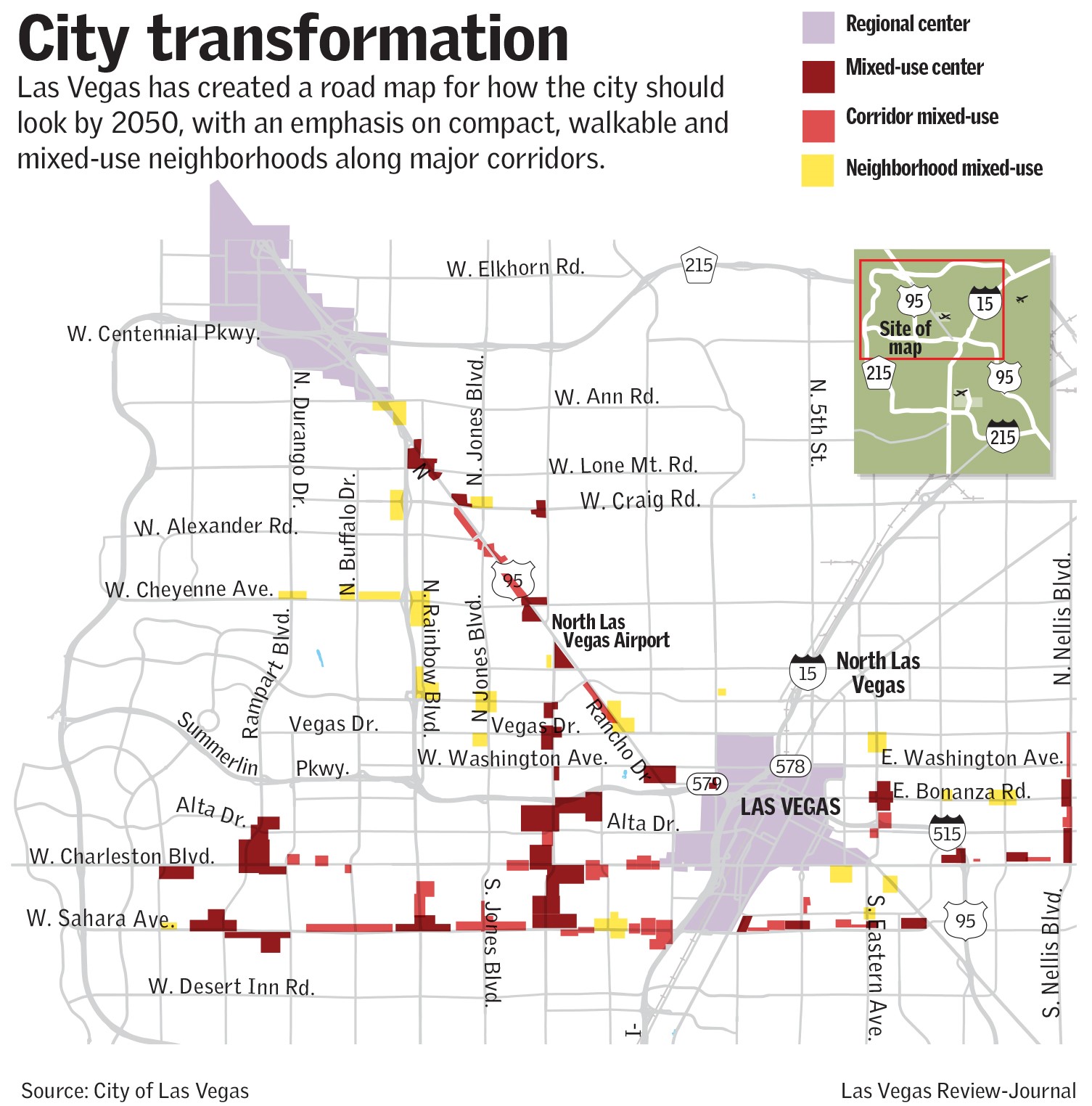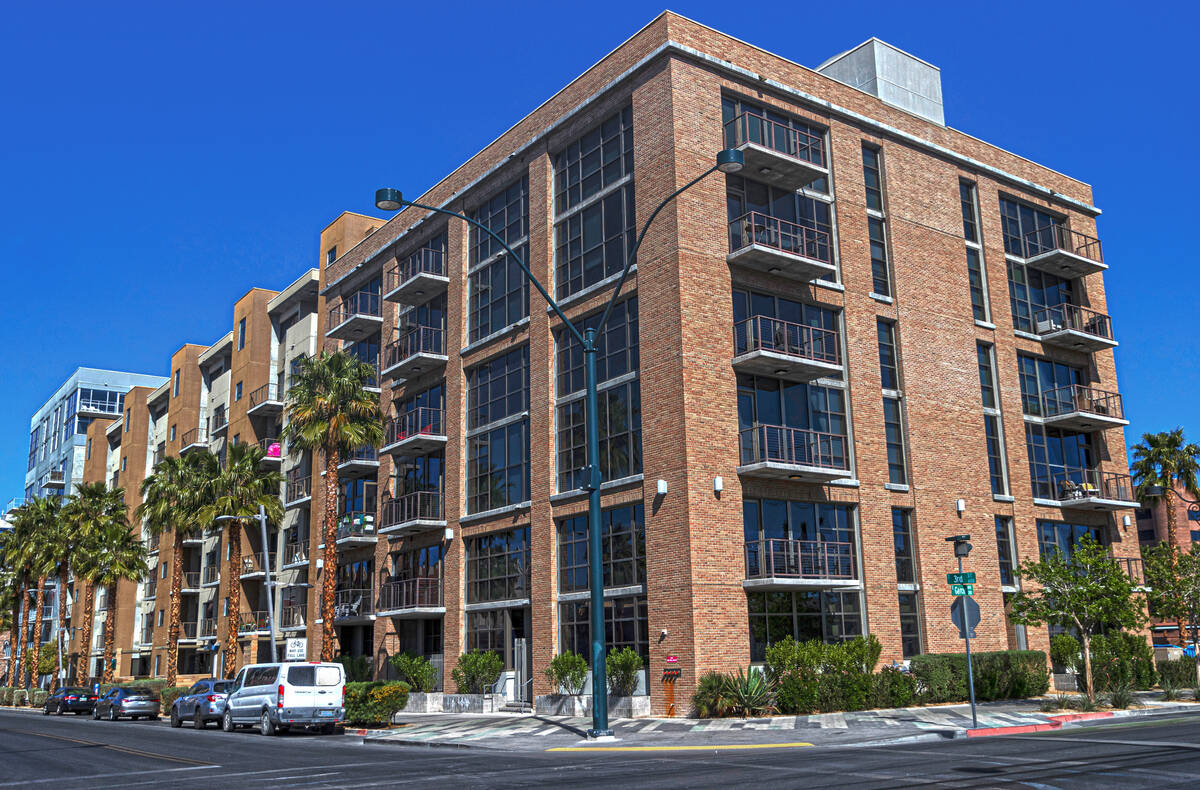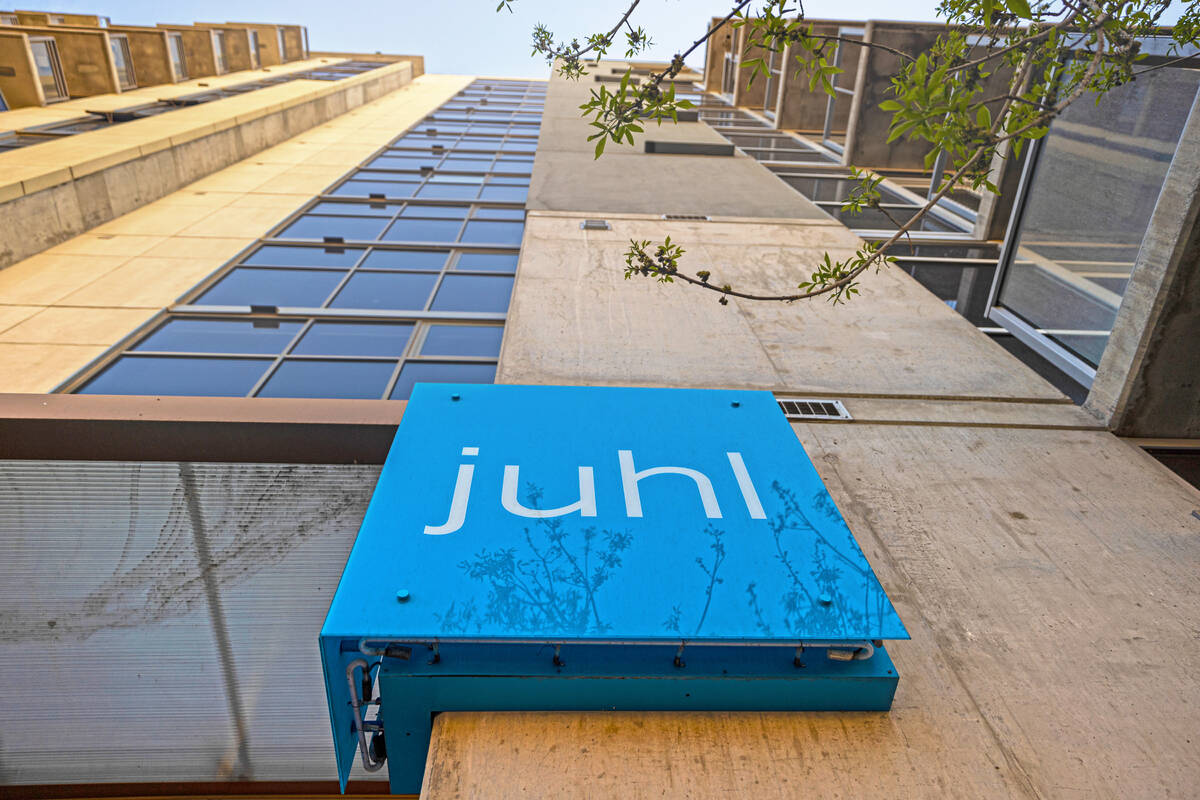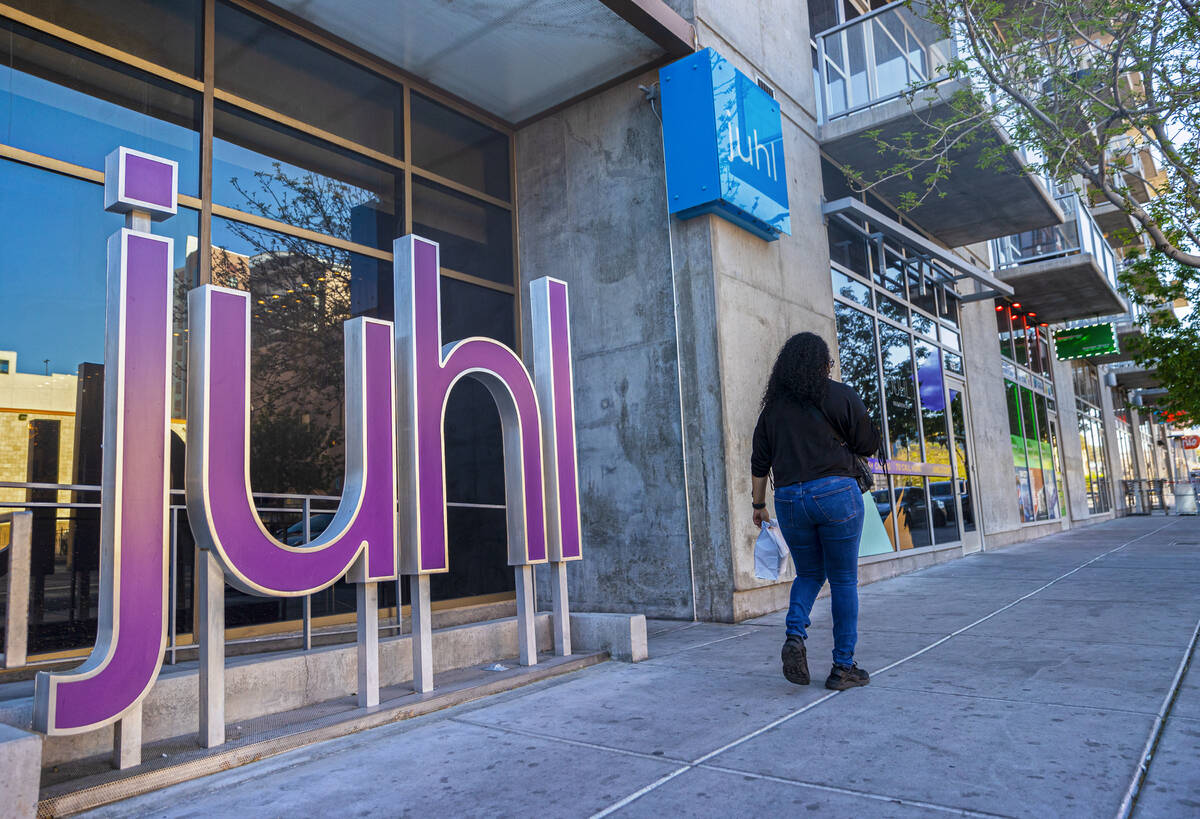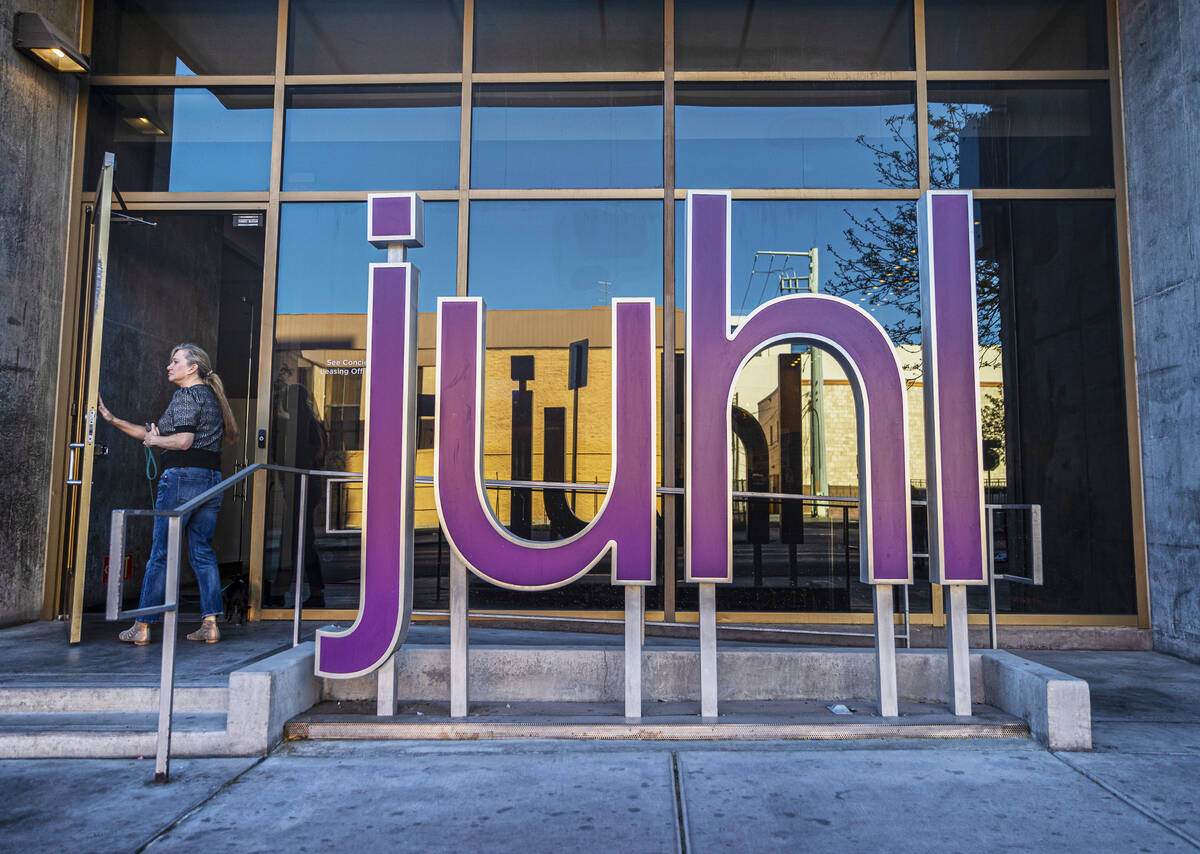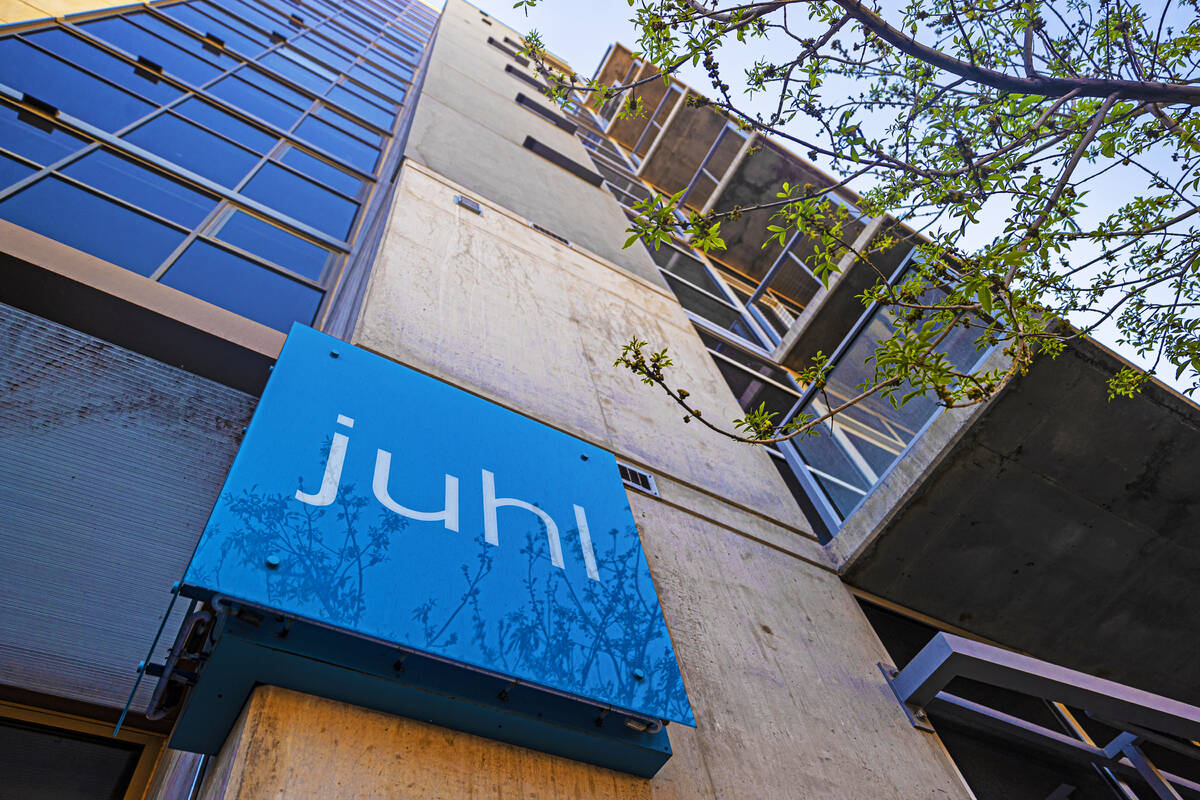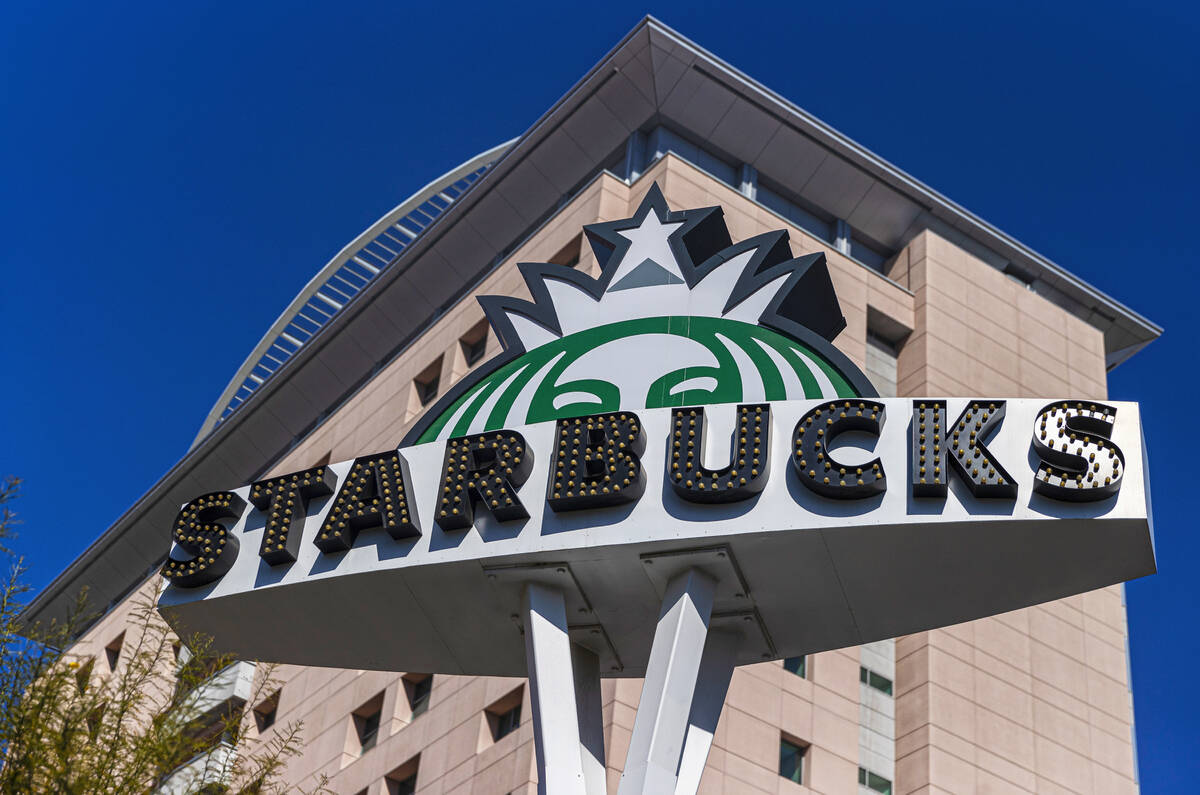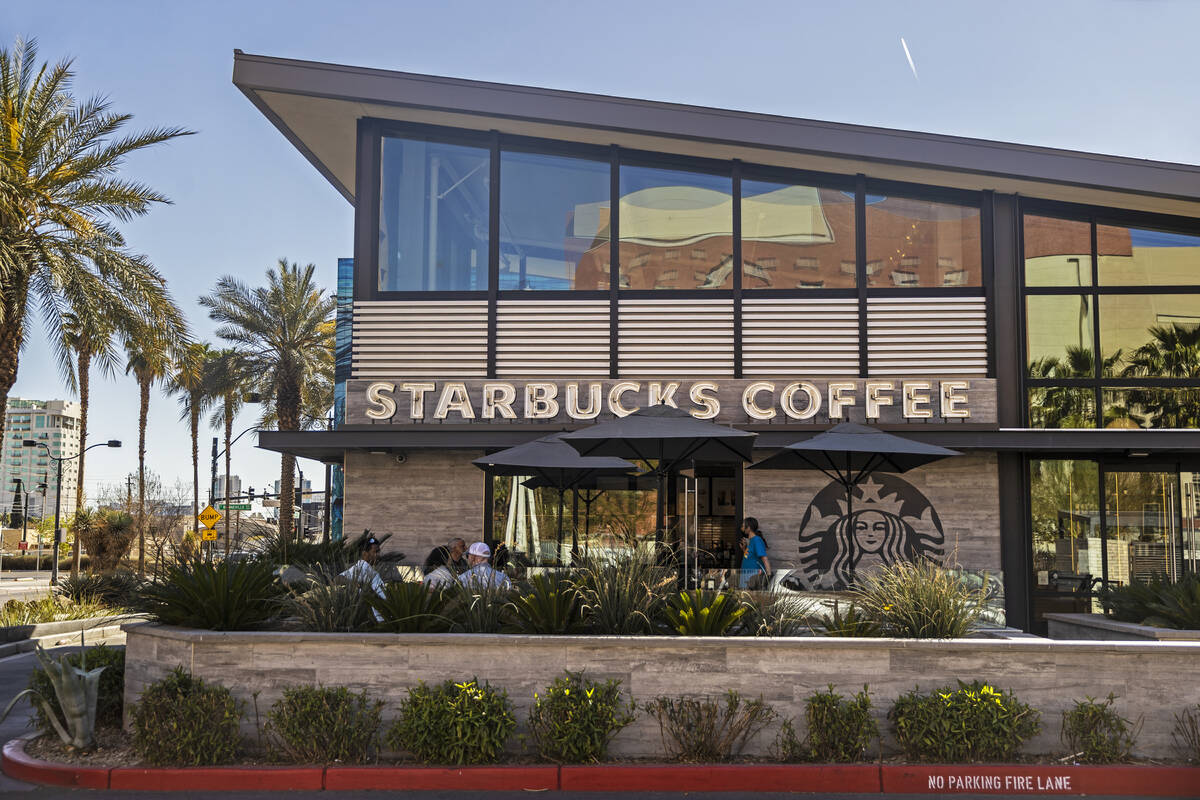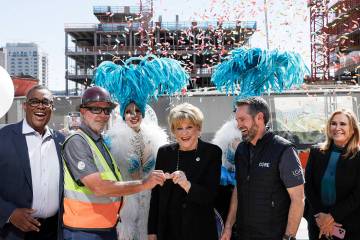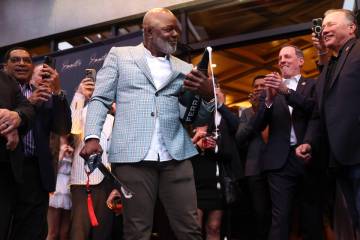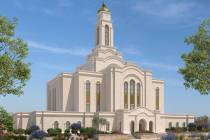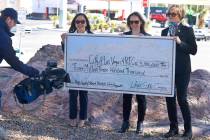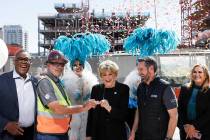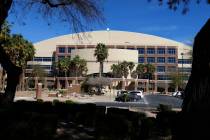Living above a store could become normal in Las Vegas
The future of urban life in Las Vegas could be up, not out: Think of a mid-rise apartment building with retail stores on the ground floor, and homes above.
Known as a “mixed-use” development, combining residential and commercial elements into a single project is a common practice in many major American cities, but it is largely not found in the sprawling Las Vegas Valley, where homebuilding has been mostly focused on outward growth.
The city has begun to embrace the concept, however, as it seeks more vibrant, compact and walkable neighborhoods with access to shopping, public transit and other amenities. The direction, which officials hope to advance over the next 30 years, comes against the backdrop of three pressing issues.
Land availability in urban core areas is scarce, so building vertically appears to be increasingly necessary for expansion. The state’s affordable housing crisis is the worst in the nation, presenting serious problems for residents and threatening to exacerbate the city’s major homelessness problem. And the region’s population is expected to continue to boom.
There are 300,000 more people expected to arrive in the city over the next three decades, city officials said.
“So that’s going to require that we think about Las Vegas differently,” said Councilman Brian Knudsen, who has publicly championed higher density in the region as an avenue to addressing challenges.
Guided by master plan
In some city districts, officials have already enacted land use regulations to set the stage for the transformation they wish to see in Las Vegas, as outlined in the 2050 Master Plan, which the City Council adopted last year to address growth.
Nearly 3,600 acres could be rezoned for some of the city’s higher-density, mixed-use goals, represented by land categories such as “Mixed-Use Center” and “Neighborhood Center Mixed-Use,” according to the plan.
The anticipated result is increased density and taller buildings along major corridors, bringing the potential for projects as tall as seven stories to areas where residents have grown accustomed to seeing vacant lots or one-story strip malls.
The focus on upward construction was underscored during talks on the master plan in February 2020, when Councilwoman Michele Fiore characterized a new single-story Starbucks downtown as a “total waste of space” for such prime real estate.
Downtown also offered one of few models of mixed-use development that Knudsen could point out during a recent interview: The Juhl luxury condominiums features a bar, market and healthy restaurant at the street level.
“We don’t have a lot of examples of that in Vegas,” he said.
Process underway
Higher-density zoning has been approved in downtown, the Medical District, Symphony Park and the Historic Westside, according to Knudsen.
It is difficult to predict when Las Vegans could expect to see noticeable differences, but it probably will take a few years, according to Dorian Stonebarger, chief policy adviser for Knudsen.
Stonebarger said that the city’s road map for mixed-use projects was thoughtfully planned out, targeting areas close to transit and not the entire city. The degree of potential change to come will also depend on the area, she said.
Knudsen acknowledged that the push for more compact development has been a tough sell to neighbors, even as he remains adamant that it is the right path forward.
“It’s very challenging as an elected official to stand before a neighborhood and say, ‘OK, the lot that you’ve got used to being vacant or the lot that you got used to being a single-story strip mall, I’m now going to rezone it so that it can be (a) two-, three- or four- or higher-story structure,’” he said.
Can developers be enticed?
Implementation of the city’s vision will be largely reliant on developer appetite and feasibility, which officials have anticipated. Certain areas, including the Medical District, now allow for so-called “density bonuses” as an incentive to market-rate developers. If they provide a certain amount of affordable housing, developers can build higher — and thus construct more housing units — to help offset the costs.
The idea “is an interesting one,” according to Mike Shohet, president of Compass Development LLC, a commercial real estate firm whose projects include the retail and office mixed-use development Village at St. Rose, near Raiders headquarters in Henderson.
Shohet, who is a former executive with Nevada HAND, the state’s largest affordable housing developer, said that density bonuses by themselves would not make projects financially feasible and additional subsidies would be necessary to account for the expensive costs of vertical construction.
Although the incentive has been proven in other markets such as Los Angeles, their premium rents are much higher than in Las Vegas, enabling developers there to balance out the cost of offering affordable housing, he said.
Still, he said there was much interest among developers in the types of projects the city is seeking, although he cautioned that there were not many who understood how to get those deals done as affordable housing financing is a complex process.
“It’s a smart idea,” he said. “I think it’s really complicated.”
Amanda Moss, spokeswoman with the Southern Nevada Homebuilders Association, said higher-density projects can reduce resident travel times, vehicle emissions and heat-island effects and also bring overdue infrastructure investments into aging areas.
Drawing the private sector into an arena where it does not normally operate is a must to increasing affordable housing stock in the region, according to Nevada Housing Coalition Executive Director Christine Hess, who supported the city’s long-term plans.
“I would absolutely say it’s a step in the right direction, and it’s a strong step,” Hess said, adding that density bonuses encouraged diverse housing types.
Mixed-use materializes
Some mixed-use projects in the city have begun to materialize. This month, the council approved a conceptual plan on the city-owned Desert Pines Golf Club, and last month city lawmakers signed off on negotiations for a roughly 60-room hotel in the Medical District featuring retail, a medical office and a parking garage.
An example of the kind of project that the city wants to amplify is under construction on Decatur Boulevard near Alta Drive. The Decatur Commons development by Nevada HAND, with buildings three- and four-stories tall, is the nonprofit’s first mixed-use development and combines affordable family and senior apartments with 10,000 square feet of retail space.
While it came to fruition before the city’s adoption of the 2050 Master Plan, it possesses qualities that city officials describe in their long-term guide as making higher density attractive: It is near transportation and amenities, and it is meant to blend into the community while strengthening the neighborhood.
It may not be the nonprofit’s last foray into mixed-use development, either.
“We’re going to continue pursuing that because we know that it’s an asset to the community,” said Waldon Swenson, vice president of corporate affairs for Nevada HAND. “We’ve seen vigorous support from our elected officials, not only in Las Vegas, but from other municipalities.”
Contact Shea Johnson at sjohnson@reviewjournal.com or 702-383-0272. Follow @Shea_LVRJ on Twitter.
